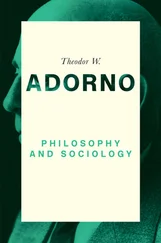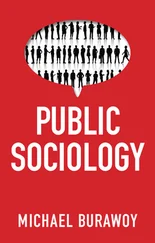Durkheim is a pivotal figure in the development of academic sociology. Like Marx, he moved decisively away from philosophy, which he saw as too far removed from the real issues of the day, and towards social science, which was able to clarify the moral questions facing French society. After working at the University of Bordeaux as the first professor of social science, Durkheim transferred to the Sorbonne in Paris and became the first ever professor of ‘the science of education and sociology’ (Coser 1977). Sociology was gaining a foothold in the academic establishment.
Durkheim also influenced the nature of the discipline itself. He saw that the study of specifically social phenomena was needed whenever research into people’s behaviour went beyond individual interactions. Social institutions and social forms – such as social movements, organizations or the family – outlive the particular individuals who inhabit them, therefore they must have a reality of their own. This reality cannot adequately be understood by individualistic psychology or abstract philosophy. In Durkheim’s terms, what we call ‘the social’ or social life is a level of reality in its own right that cannot be reduced to individual actions or thought of as a simple aggregate of individual minds.
Durkheim focused on group phenomena and social facts such as suicide rates, social solidarity and religion. People experienced social facts as ‘things’ external to the individual, rather like tables, bridges or buildings. The latter are all human creations, but their existence has to be taken into account and cannot be wished away. Similarly, social facts have a ‘thing-like’ existence which individuals must accept and take into account in their actions.
This thing-like reality of social facts means that the psychology of individuals was not the proper subject for sociology, which concerns itself with collective phenomena. For example, in The Division of Labour in Society (1893), Durkheim outlined his distinction between the mechanical forms of solidarity found in less complex societies and the organic form that characterizes large-scale, modern, industrial ones. Mechanical solidarity exists when individualism is minimized and the individual is subsumed within the collectivity. By contrast, organic solidarity is generated by the extensive division of labour in industrial societies, which produces many differences in work tasks, roles and statuses, but a strong form of cohesion is achieved because large groups of individuals in very different industries become dependent on each other.
Durkheim therefore rejected the idea – common at the time and since – that industrialism inevitably destroys social solidarity and threatens the fabric of society. In fact, stronger bonds of mutual interdependence are created under organic forms of solidarity, which have the potential to create a better balance between individual differences and collective purpose. Here we can see how Durkheim’s scientific sociological analysis is closely tied to a moral and social problem of the day – how can industrial societies hold together in an age of increasing individualism?
Durkheim’s approach to sociology is known as functionalism, the study of society and the way its institutions connect together and change. Yet, though it has been very influential in the past, functionalism is in retreat. There are several reasons why.
Many have argued that functionalism is good at explaining consensus – why societies hold together – but less effective in explaining conflict and radical social change. Others argue that Durkheimian functionalism prioritizes societies’ constraints on people and does not allow enough room for the creative actions of individuals. Functional analysis also tends to impute ‘purposes’ and ‘needs’ to society itself. For example, we might say that the function of the education system is to train young people for the needs of a modern society. This seems to suggest that societies have ‘needs’ in the same way that people do. But is this really an adequate form of explanation? Modern economies may well require certain skills, but is the present education system the only or even the best way to provide them? What we really want to know is how, exactly, did the education system develop into its present form and could things have been different? Functionalism does not prioritize such questions.
Durkheim rejected the idea that sociologists should study individual psychology. Was he right? What is the appropriate subject matter for sociologists?
Twentieth-century structural functionalism
In the 1940s, 1950s and 1960s, a version of functionalist theory known as structural functionalism became the central paradigm of sociology, though it was never totally dominant. It is hard for students today, who see sociology as a discipline that is inevitably pluralistic, argumentative and theoretically diverse, to appreciate just how different doing sociology was at that time. Sociology and structural functionalism were often seen as one and the same thing (Davis 1949). Two American sociologists stand out during this period: Robert Merton and his mentor, Talcott Parsons.
Parsons combined the ideas of Durkheim, Weber and Vilfredo Pareto into his own brand of structural functionalism, which began from the so-called problem of social order (Lee and Newby 1983). This asks how society can hold together when all the individuals within it are self-interested and pursue their own wants and needs, often at the expense of others. Philosophers such as Thomas Hobbes (1588–1679) answered this by saying that the emergence of the modern state, with all of its policing and military powers, was the crucial factor. The state protects individuals from one another and from external enemies, and, in return, citizens accept the state’s legitimate right to exercise power over them.
Parsons rejected this solution. He recognized that conformity to social rules was not produced simply through the negative fear of punishment; people also conformed in positive ways, even teaching others the moral rules of society. Such a positive commitment to an orderly society shows that social rules are not just an external force acting on individuals but have become internalized during the process of socialization. Society exists not only ‘out there’ but ‘in here’ as well.
Having established the primacy of a sociological understanding of social order, Parsons turned his attention to the overall social system. He devised a model known as the AGIL paradigm (Parsons and Smelser 1956). If a social system (or society) is to continue, there are four basic functions it must perform. First, it must be capable of adapting to its environment, gathering enough resources to do so. Second, it must set out and put in place goals to be attained and the mechanisms for their achievement. Third, the system must be integrated and the various sub-systems must be effectively coordinated. Finally, the social system must have ways of preserving and transmitting its values and culture to new generations.
In less abstract terms, Parsons saw the economic sub-system performing an adaptive function, the political sub-system as setting society’s goals and the means of attaining them, the community sub-system (‘societal community’) as doing integrative work, and the educational sub-system (and other socializing agencies) as transmitting culture and values – the latency function (see figure 3.1). Structural functionalism was a theory which gave priority to the overall system and its ‘needs’ and was always vulnerable to the charge that it overemphasized consensus and agreement. The task of solving this problem passed to Robert Merton, who pursued a more critical version of functionalism.
Читать дальше












